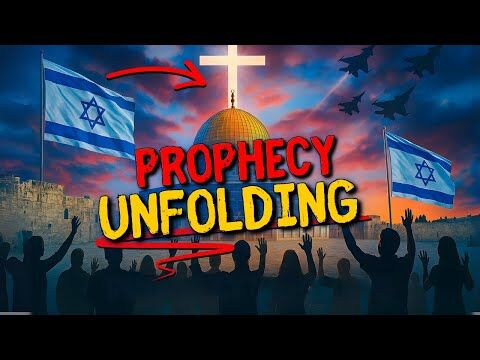We often say, “don’t put God in a box” but, ironically, He put Himself in one for over 800 years!
What we mean by that phrase is to take the limits off of God and give Him freedom to work as He sees fit. God didn’t confine Himself inside a box completely, but for centuries most of how God expressed Himself and manifested His presence, power and glory revolved around a small, single box!
God gave Moses the blueprint for the tabernacle and all its furnishings on Mount Sinai (Ex. 25-31). The ark of the covenant was built in Exodus 37 in around 1447 B.C. It was housed in the tabernacle of Moses for centuries and moved around during Israel’s trek through the wilderness and the conquest of Canaan. During the times of the judges, it settled in Shiloh and in Gibeah, then it was relocated to the tabernacle of David in Jerusalem.
Finally, it was permanently set in Solomon’s temple where it remained during the reign of the kings of Israel. Solomon’s temple was destroyed in 586 B.C. So, for roughly 861 years, most of what God said and did in the earth was connected to this golden box (but it was no ordinary box).
The ark of the covenant was the most sacred piece of furniture on earth and Israel’s most prized possession. It was a visible icon of the invisible God. There are nearly 200 references to the ark in the Bible, proving its prominent role in Israel’s history. The ark represented God’s tangible presence among His people and was, in essence, God’s throne on earth. It was the centerpiece of Jewish life and the epicenter of Israel’s religion and worship.
A pillar of cloud by day and fire by night hovered over it to signify God’s shekinah glory—a Hebrew term that means “the one who dwells.” In transport or battle, the ark was carried on the priest’s shoulders in either the front or center of the tribes (Num. 10:33-36; Josh. 3:13-17, 6:6-20). The whole nation of Israel revolved around the ark and the 12 tribes camped around the tabernacle (three tribes on each side). This is symbolic of how God desires and deserves to be the center of our lives and put first as our No. 1 priority.
The ark was rather small, but it packed a big punch! It was a small box, but a big God was behind it (little is much if God is in it). Dynamite comes in small packages. The dimensions are given in Exodus 25:10 (NLT), “Have the people make an Ark of acacia wood—a sacred chest 45 inches long, 27 inches wide, and 27 inches high.” Think of how God’s glory manifested through this small box:
—As priests carried the ark into the Jordan river, the waters rolled back, and the Israelites walked through on dry ground (Josh. 3:13-17).
—The Israelites marched around Jericho for seven days with the ark in front and then shouted, and God crushed the massive walls like matchsticks (Josh. 6:6-20).
—With the ark leading the way, Israel conquered 31 kings during the conquest of Canaan (Josh. 12:1-24).
—When the Philistines stole the ark, they put it in their temple with their pagan idol, Dagon. Dagon fell prostrate on his face before the ark. They set him back up, but the next day he fell down again with his hands and head severed. That was God’s way of saying, “I am the one true God and will not dwell in the same temple with idols” (1 Sam. 5:1-5).
—While the ark was in Philistine custody for seven months, God smote them with severe plagues (1 Sam. 5:6-12). The same ark that brought blessing to Israel brought curses on the heathen.
—In Beth Shemesh, 50,070 people were slain when they foolishly opened the lid of the ark (1 Sam. 6:12-20).
Small box, big God!
“And it was, when the ark set out, that Moses said, ‘Rise up, O Lord, and let Your enemies be scattered, and let them that hate You flee before You'” (Num. 10:35, MEV). As long as Israel was true to God, they were invincible; when they strayed, they were vulnerable. The same is true for us. The ark is a fitting type of Christ since the fullness of God dwelt in Him (Col. 1:19, 2:9). However, it can also be a type of the church. Just as that sacred chest held the book of the Law, the Ten Commandments, a golden bowl of manna and Aaron’s rod that budded, so we contain God’s Word and the life-giving power of the Holy Spirit. One major difference is the ark was only God’s temporarily dwelling place; we are God’s eternal dwelling place via the Holy Spirit (John 14:16; 1 Cor. 3:16).
So whatever happened to the ark? After the destruction of Solomon’s temple in 586 B.C., it vanished from biblical history. We do know neither Indiana Jones nor the Nazis found it as depicted in the movie Raiders of the Lost Ark. Jewish tradition says Jeremiah or King Josiah hid it in a cave to prevent desecration. Others believe the Babylonians looted it. The last time it is mentioned is in heaven (Rev. 11:19), but is that the same ark or a heavenly prototype of an earthly replica? Did God cherish the ark so much He raptured it? Its fate remains a mystery.
Jeremiah prophesied of a time when the ark wouldn’t matter anymore, “Then it shall come to pass, when you are multiplied and increased in the land in those days,” says the Lord, “that they will say no more, ‘The ark of the covenant of the Lord.’ It shall not come to mind, nor shall they remember it, nor shall they visit it” (Jer. 3:16, NKJV).
In other words, the ark is obsolete. Why? Because we are the arks of the New Covenant. God did miraculous things through a box in Old Testament times, and He can also do great things through us now. So don’t put God in a box. He doesn’t live in a box anymore; He lives in you!
Ben Godwin is the author of five books and pastors the Goodsprings Full Gospel Church. You can read more articles or order his books at bengodwin.org.































































